No products in the cart.
No products in the cart.
No products in the cart.
No products in the cart.
Home » Neurological Recovery Blog » Neurological Recovery » The Best Physical Therapy Tools: Recommendations from the Experts
Last updated on August 22, 2022

Physical therapy equipment is used to promote recovery, improve mobility, increase strength, and maintain overall health. While attending one or multiple physical therapy sessions a week is beneficial, it may not be enough to help you reach your goals. Therefore, it may be helpful to have your own physical therapy tools that you can use at home to reinforce or supplement what you are doing in rehab.
Finding the proper physical therapy equipment can be challenging and time-consuming, especially when the options are virtually endless. To help you find the right equipment for your needs, we’ve gathered some of the most popular physical therapy tools in this article. While some may be designed for a specific purpose, many are versatile and can be used for a variety of goals.
One of the most prominent benefits of investing in your own physical therapy tools is the ability to take charge of your recovery. Whether you struggle with injury-related pain or a neurological injury, physical therapy is an essential part of rehabilitation.
However, it can be difficult for individuals to engage in physical therapy when insurance doesn’t cover frequent sessions, or when exercises done in rehab cannot be repeated at home due to lack of equipment. Other factors can also interfere with outpatient physical therapy, such as lack of transportation.
Fortunately, with the proper physical therapy tools and guidance from your therapist, individuals are able to practice at home as much as they want. Repetition matters when it comes to neuroplasticity and regaining function. By having your own tools and equipment, you are empowered to take charge of your journey to recovery and can complement what is being done in rehabilitation on your own schedule.
When searching for at-home equipment, try to find physical therapy tools that are both engaging and motivating. Consistent practice is key to recovery, so it helps to search for equipment that you can see yourself using daily. Cost can also be a major barrier to purchasing equipment. If this is an issue, pay special attention to tools that can be used for a variety of different movements or exercises rather than a piece of equipment you can only use one, specific way. Value and versatility are important when considering your purchase.
Lastly, consider how much space you have available in your home. While most of the tools listed here do not require much space to use, you may need to think about whether you have an area to not just use the equipment, but also to store it.
Your therapist is an essential resource for guidance on which exercises and physical therapy tools are right for you. They may suggest searching for tools similar to what you use in the clinic so that you can continue working on certain exercises or activities at home.
To help supplement your therapist’s advice, you can browse through this roundup of the most helpful physical therapy equipment that you can use at home. We’ll start with the most popular items and then dig into neurological- and strength-specific tools later down the list.
Here are some of the most popular physical therapy tools:
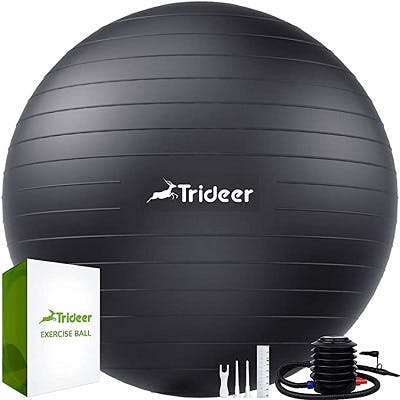
Exercise balls, also known as physio balls or Swiss balls, are amongst the most popular physical therapy tools and provide many benefits. They are great for stretching, strengthening muscles, improving posture, and preventing back pain. Because of its shape and inflatable design, exercise balls are often used to target balance, joint stability, and core recruitment.
They also come in different sizes; a larger exercise ball will be a little easier to stabilize on, but may take up a bit more space, while a smaller one will be more difficult. Exercise balls are multi-functional because they can be used for a variety of challenging exercises that you can do at the clinic with your therapist and at home on your own.
Shop exercise balls on Amazon »
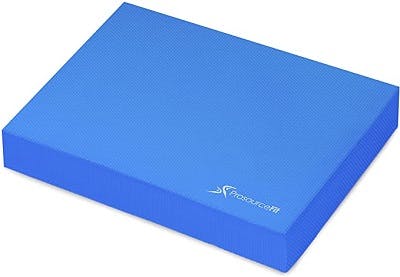
Balance pads help improve balance and stability while performing strength exercises and dynamic movements. Usually made of a dense foam material, these pads create a noncompliant, unstable surface. This forces you to engage more muscles in your body to stabilize yourself as the surface responds to your movement. It is very important that the balance pad is placed on an area of the floor where it cannot slip out from underneath you. When using the balance pad, make sure you are close to a nearby sturdy surface like the wall or counter top so that you can steady yourself for safety.
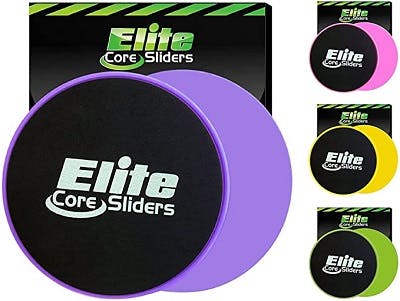
Exercise sliders are an underrated gliding physical therapy tool that allow you to work on a variety of upper body, lower body, and core exercises. If you’ve been using towels for certain exercises, you may want to upgrade to exercise sliders. They’re an affordable option and incredibly versatile during a workout. Rather than being confined to a tiled or hardwood floor area with a towel, exercise sliders can be used on carpets and rugs as well.
Shop exercise sliders on Amazon »
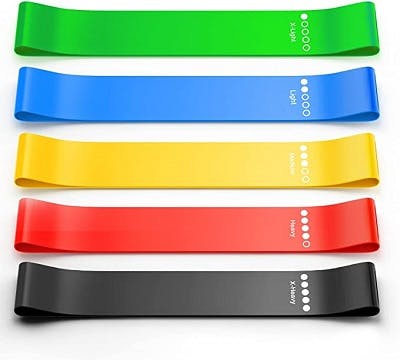
Outside of your physical therapy clinic, resistance bands are another inexpensive and effective physical therapy tool. They provide many benefits whether you’re looking for a challenge, need to stretch, or are doing a full workout.
Even a set of lightweight resistance bands can provide added challenge to an exercise, which is necessary to continue progressing strength. They are often sold in sets of different levels of resistance, and can be purchased as loops or long bands depending on what types of exercises you will primarily be using them for.
With resistance bands you can also target smaller and specific muscles, such as the rotator cuff, which are usually more difficult to access with traditional exercises. Again, be careful to practice exercises that your PT deems safe, because the rotator cuff is vulnerable to further injury if put under too much stress.
Shop resistance bands on Amazon »
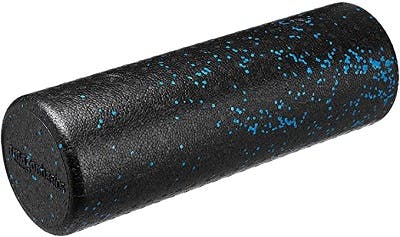
Foam rollers can often help reduce muscle pain and increase range of motion by reducing muscle tension and stiffness. Foam rollers come in a wide range of shapes and sizes at an affordable price. If you are new to foam rolling or are particularly sensitive to deep pressure or massage, it is generally recommended that you purchase a low- to medium-density foam roller without the knobs and ridges. They are simple but effective physical therapy tools that are primarily used for improving mobility, but can also be used during core stabilization exercises.
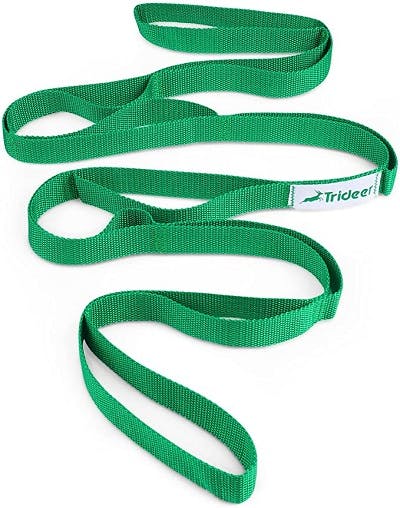
Stretching straps are great for stretching your muscles but also for challenging your flexibility and reducing muscle tension. They are inexpensive and effective, but provide many benefits including: controlled movement of your limbs, better posture, and deeper stretches with the help of the additional length (even if you have minimal flexibility).
In fact, many athletes rely heavily on these straps to mimic partner-assisted stretching. With the straps, you’ll be able to perform certain stretches that you would otherwise need a second person to do, and will allow you to relax into a stretch more easily since you would not have to strain as much to reach certain positions or body parts.
Shop stretching straps on Amazon »
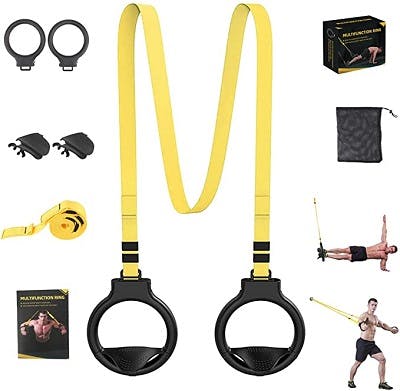
Another versatile piece of equipment is the TRX, an all body weight training system. It’s among the most popular physical therapy tools because it’s safe for all stages of rehabilitation (when used correctly), appropriate for individuals of all age groups, portable, and relatively simple. The TRX allows you to practice exercise movements to your ability level. TRX is also great for core workouts and targeting shoulder and/or knee pain.
Individuals who endured a traumatic brain injury, stroke, or have another neurological condition may experience difficulty with motor functions such as balance, movement, and coordination. Fortunately, many can improve their mobility through physical therapy.
The goal of physical therapy after neurological injury is to retrain movement patterns and restore function by activating neuroplasticity. Neuroplasticity is the brain’s ability to rewire itself; and it’s activated by high repetition. The more a specific physical therapy exercise is practiced, the more neuroplasticity is activated and movement restored.
The following physical therapy tools and equipment are designed specifically for those with a neurological injury or condition.

Therapy putty is designed to help individuals improve hand strength and regain mobility. As a simple, affordable accessory, it can also help restore dexterity and coordination in your hand. Engaging in therapy putty exercises daily helps stimulate the brain and activates neuroplasticity. Thus, the more you exercise your hand, the more the brain recognizes its demand for that function. With the therapy putty, you can mold, shape, pinch, grab, smash, and squeeze using different hand positions to help restore hand function.
However, it can be hard to stick to a daily routine with a simple tool. If you want an extra dose of motivation, it helps to explore interactive neurorehabilitation devices.
Shop therapy putty on Amazon »

FitMi is an interactive neurorehabilitation device designed to help you improve mobility from the comfort of your own home. It guides you through full-body rehabilitation exercises specific to the areas you want to target, and can be modified based on your ability level.
FitMi motivates you to accomplish high repetition exercises in an engaging interface to help stimulate the brain. It also adapts to your skill level, so as you improve it will also unlock harder exercises for you to try. Best of all, it’s interactive and tracks your progress to help you stay consistent with your at-home physical therapy routine.
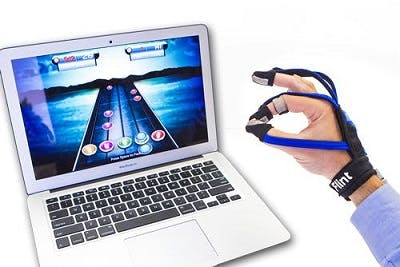
Another popular at-home physical therapy device is MusicGlove. This music-based hand therapy device has been clinically proven to help individuals improve hand function within 2 weeks.
MusicGlove motivates individuals by using a fun, interactive musical game in sync with hand therapy movements. Often, individuals may forget they are doing physical therapy because they become immersed in the experience. Staying engaged and motivated helps individuals accomplish high repetition, which helps activate neuroplasticity and improve hand function.
Shop MusicGlove from Flint Rehab »
When your therapist says you’re ready to add some resistance training to your regimen, you can try some simple strength-building physical therapy tools. Be particularly careful when using these items to make sure you don’t push yourself too far and exacerbate any pre-existing injuries or pain.
Here are some popular physical therapy tools that help build strength:

Grip strength is necessary for daily functional tasks like carrying and lifting, but also allows you to develop the ability to grasp objects and improve your independence. Usually, functional grip strength is also an indicator of overall health. Therefore, it’s important for individuals who struggle with grip to find ways to strengthen it. Grip trainers are a great way to improve, build, and restore strength.
Shop grip trainers on Amazon »

Adjustable cuff weights can be attached to your ankles or wrists and help build strength. They offer incremental resistance that you can use to increase the level of difficulty in your exercises. Even one pound of extra resistance can make a difference. Because the weights can be wrapped around your wrist or ankles, even individuals with decreased hand or grip function are able to use it for strength training. Be sure to check with your physical therapist before adding extra weight to make sure it’s safe for you.

Fat Gripz allow individuals with decreased grip strength to be able to grasp onto traditional weight equipment for strength training exercises. They are universal and can wrap around dumbbells, bars, kettlebells, and other weight attachments where an individual may otherwise have difficulty wrapping their hand around.
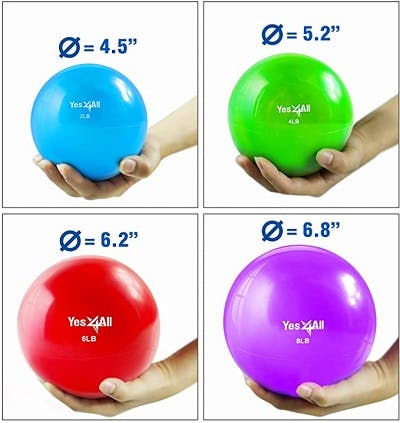
Weighted medicine balls can help improve posture, balance, coordination, and strength. They can add extra load to any traditional strength or core exercise or tossed with a partner during a balance task to increase the challenge. Weighted medicine balls come in a variety of sizes and weights, so it is important to consider what types of exercises you might be using them for.
Shop weighted medicine balls on Amazon »
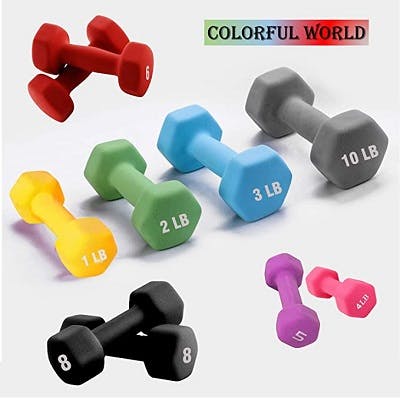
Dumbbells can help strengthen your muscles and perform compound movements that work multiple muscles in your body. How many to buy depends on the weight you want or require. A pair of two dumbbells, for instance, can help you increase resistance for other physical therapy exercises. Although more expensive, you can also purchase a single pair of dumbbells that allow you to adjust or change out the weight to suit your needs.
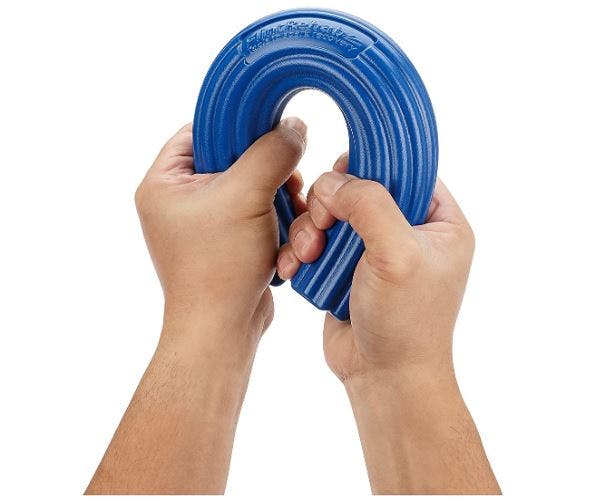
Flex bars are another simple physical therapy tool that offers resistance training for your grip and forearm. They are great for increasing hand and forearm strength, and also reducing elbow pain related to “tennis elbow.” Be sure to check with your therapist before doing any kind of exercise to help treat pain, in order to make sure they are appropriate for your condition and performed safely.
Physical therapy provides many benefits for mobility, and it’s important to keep up with your exercises at home between therapy appointments. Therefore, investing in physical therapy tools can help you keep up with your recovery goals at home.
Physical therapy tools can help you make strides in rehabilitation when used consistently. Try to choose equipment that will make it fun for you to participate in therapy, such as interactive devices like FitMi. Stay focused, stay engaged, and results will come. We hope this article has helped you in your search for physical therapy equipment.
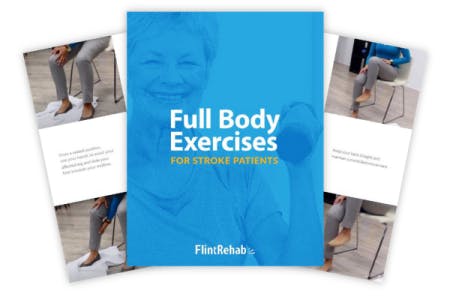
Get our free ebook filled with 25 pages of rehab exercises featuring photos of licensed therapists. Sign up below to get your copy!
When you sign up, you’ll also receive our popular Monday newsletter that contains 5 articles on stroke recovery.
We never sell your email address, and we never spam. That we promise.

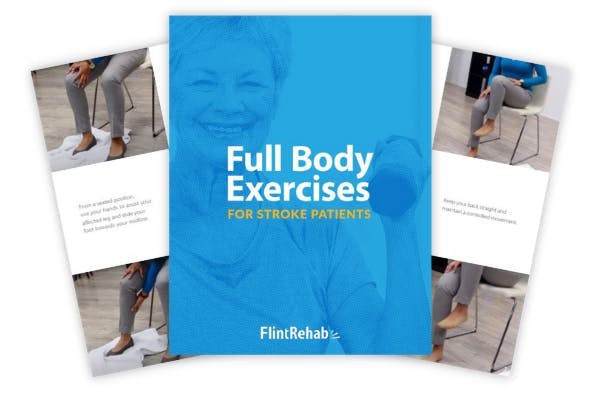
Do you have these 25 pages of rehab exercises?
Get a free copy of our ebook Full Body Exercises for Stroke Patients. Click here to get instant access.
“When my 84-year-old Mom had a stoke on May 2, the right side of her body was rendered useless. In the past six months, she has been blessed with a supportive medical team, therapy team, and family team that has worked together to gain remarkable results.
While she still struggles with her right side, she can walk (with assistance) and is beginning to get her right arm and hand more functional. We invested in the FitMi + MusicGlove + Tablet bundle for her at the beginning of August.
She lights up when we bring it out and enjoys using it for about 20 to 30 minutes at a time. While she still doesn’t have enough strength to perform some of the exercises, she rocks the ones she can do! Thanks for creating such powerful tools to help those of us caring for stroke patients. What you do really matters!”
-David H.
FitMi is a neurorehab device that you can use from the comfort of home. It works by motivating you to accomplish high repetition of therapeutic exercises.
As you work through the program, you’ll unlock more difficult exercises when you’re ready. It’s like having a virtual therapist available anytime you need it.
See how quickly Sudhir was able to notice improvements:
“I bought FitMi about a month and a half ago. Quite impressed with the range of exercises for hand, arm, leg and foot. I suffered a stroke about 2 years ago which paralyzed my right side. I do walk now with a cane or walker, but my right hand curls up and my right arm is also weak. Within a few days of trying it out, I could note a distinct improvement in stamina before tiring. So, I am looking forward to continued improvement.”
-Sudhir
Not only is FitMi approved by survivors, but it’s also approved by therapists, too. FitMi is used in some of the top clinics in the world, including the Shirley Ryan Ability Lab, the #1 ranked rehab hospital in America. Plus, two PTs on YouTube with over 3 million subscribers (you may know them as Bob & Brad) gave FitMi the thumbs up, too.
To learn more about this motion-sensing, game-changing recovery tool, click the button below:
Grab a free rehab exercise ebook!
Sign up to receive a free PDF ebook with recovery exercises for stroke, traumatic brain injury, or spinal cord injury below: